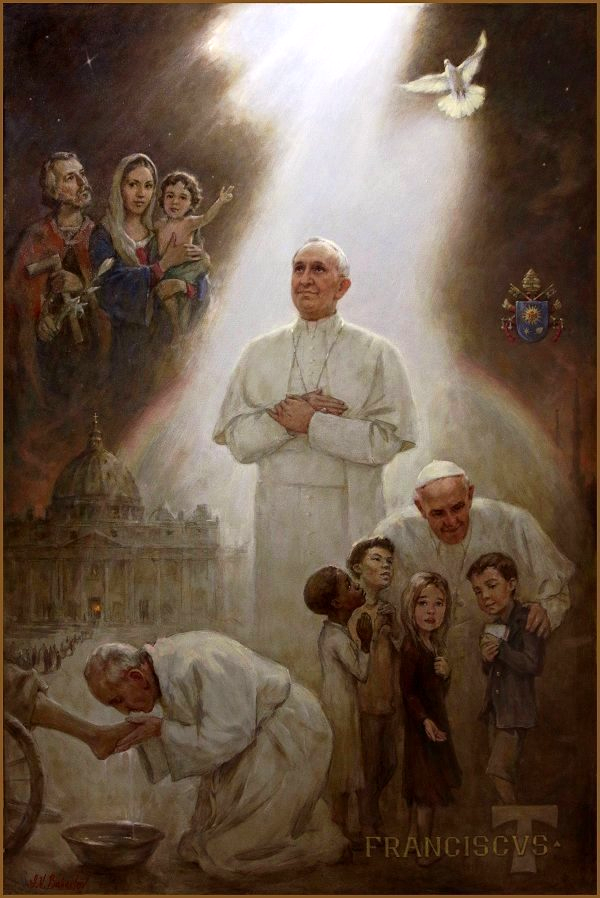This is no easy time for the priesthood. The culture that produced and celebrated Bing Crosby’s portrayal of Fr. Charles O’Malley in Going My Way (1944) and, two years later, The Bells of St. Mary is extinct. Decent, congenial “Fr. Chuck” was a blithe symbol of goodness, honor, and virtue that an entire nation could trust and embrace.
Not any more.
On both sides of the screen, the cultural landscape has changed. In the culture at large, and the eyes of many Catholics themselves, the priesthood has become a tainted profession. Older Catholics can still second Bernard Häring’s opening remarks in Priesthood Imperiled (1996). Born in 1912, he recalled his childhood experience with a local pastor:
In those days, by virtue of ordination, the pastor (“an average man by all standards”) was perceived by the flock as a superior being, a kind of lord, and as one of the most esteemed persons in the town.
How long ago that seems. Yet half a century and two world wars after Häring’s boyhood in Germany, American Catholics could still say the same about their priests. Between 1951 and 1957, Fulton Sheen’s Life is Worth Living televised the substance of Catholic identity to some 30 million viewers a week—not all of them Catholic or even Christian. The Fulton Sheen Program ran from 1961 to 1968. During those decades, Time and Life ran feature stories on the bishop—“Uncle Fultie”— who gave Milton Berle (“Uncle Miltie”) a run for ratings.
Today, turning on the radio, I listen to an ad for Anderson & Associates, a zealous St. Paul-based law firm with offices in seven states. It begins: “If you have been abused by a priest, a teacher, a coach, or any figure of authority . . . “ The commercial leads with the word priest apropos of the firm’s bleak specialty: clergy abuse.

It makes me cringe. I do not want to hear that sexual abuse by a priest has become an established subset of personal injury and premises liability cases. Premises under suspicion include sacristies, rectories, Catholic schools, seminaries, and the confessional box. Increasing numbers of parish websites carry a banner touting the USCCB’s Safe Environment Program. Intended to reassure, it is a de facto badge of shame. No sexual predators here. Your children are safe with us. Trust us. But just in case, know how to contact a Program coordinator:
To report an incident of child sexual abuse, please click here and fill out our online form. If there is an emergency, and you believe that a child is in imminent risk, please call 911, and then contact the New York State Hotline (1-800-342-3720). The Director of the Archdiocese Safe Environment Office can be contacted outside of business hours by email: emechmann@archny.org.
God help us.
St. Joseph’s Seminary is a Safe Environment
St. Joseph’s Seminary, Dunwoodie, attaches a link to the program at the bottom of its home page. The link is discreet, but the dismal message is the same. Rather like the Surgeon General’s warning on a pack of Kents, it suggests in spite of itself something unhealthy in the air.
The tiny link takes you to the Archdiocese’s online Safe Environment prospectus. For more pronounced emphasis, the first item on the drop-down menu on the seminary’s home page—ahead of anything related to the purpose of a seminary—is a statement of St. Joseph’s Sexual Misconduct Policy and Procedures. It declares the institution’s commitment to an environment “free from sexual misconduct and other forms of unlawful discrimination.” (Discrimination?) It is a stellar illustration of language tailored to limit legal liability:
Sexual Misconduct is prohibited by this Sexual Misconduct Policy and Adjudication Procedure . . . . The Seminary will take appropriate action to eliminate sexual misconduct, prevent its recurrence, remedy its effects on the Seminary community, and, if necessary [my italics] discipline behavior that violates this Policy. All Seminary Student’s are entitled to the Bill of Rights with respect to New York State Education Law Article 129-B, also known as “Enough is Enough” legislation.
. . . Even if the individual does not wish to report the criminal conduct to the Seminary or to local law enforcement, he or she should still consider going to a hospital, both for his or her own health and well-being and so that evidence can be collected and preserved.
In accord with Governor Cuomo’s 2015 “Enough is Enough” initiative against against campus rape culture and domestic violence, the seminary helpfully gives an address and phone number for two hospitals in the area. By the time you finish reading this preamble to the tenor of life at Dunwoodie, you know how far down the rabbit hole we have plummeted.
The Pope and His Journalist
Once again the People’s Pope turns to a compatico journalist to work points, a tactic that does not carry a dram of magisterial weight. Fr. Fernando Prado, director of the Claretian publishing house in Madrid, has converted a four-hour conversation with Francis, recorded in August, into a book on the consecrated life, The Strength of Vocation. Pre-publication snippets are enough to suggest that the project is an exercise in triangulation, papal politics couched in pastoral piety. In light of Francis’ communications savvy, it is hard not to see the book as a maneuver calculated to tell the Catholic faithful what it expects a pope to say on homosexuality in the priesthood—albeit in a manner that sidesteps Archbishop Viganò’s challenge.

According to Vatican News, Francis asked not to be told beforehand the questions Fr. Prado would ask. Vatican spinmeisters claim the request was meant to enable “an open and honest dialogue” on matters of consequence. More likely, Francis was taking care to keep his remarks where he likes them—within the personal sphere of extemporaneity. This is where he can speak off-the-cuff. In others words, not quite off the record but not quite on it either. Cuffs, after all, can be changed.
Francis confides he is “worried” about homosexual priests. He acknowledges a mismatch between homosexuality and the demands of celibacy: “It is better that they leave the priesthood or the consecrated life rather than live a double life.” Only better? Not mandatory? The adjective suggests—inadvertently—that a double life is comparatively less good than an integral one, but not necessarily to be ruled out. (It calls up thoughts of the AC/DC career of Marcial Maciel; and of Chicago’s John Cody, the cardinal and his “cousin” apparently joined in a clerical variant of The Captain’s Paradise.)
With his eye on the current storm of sexual abuse, Francis adheres to traditional teaching. It is the only politic thing to do. This is the wrong time for another who-am-I-to-judge moment. From The Guardian:
A decree on training for Roman Catholic priests in 2016 stressed the obligation of sexual abstinence, as well as barring gay men and those who support “gay culture” from holy orders.
The barring of people who present homosexual tendencies was first stipulated by the Catholic church in 2005.
In short, Francis reiterates customary Church teaching, entrusting it to the informality of a conversation-turned- publishing-venture. Meanwhile, in practice, he has drawn around himself, listened to, and advanced a coven of unpalatable men from Victor Manuel Fernandez and Vincenzo Paglia to Theodore McCarrick, until recently, and McCarrick’s protégés, among others. (Paglia’s homoerotic mural still stands; McCarrick was merely demoted to archbishop.) Francis continues to stonewall calls for an official response to the allegations made by Archbishop Viganò, withholding any utterance to which he can be held to account. He has just banned U.S. bishops from voting on stringent measures against abusive clergy.
Chats with journalists have no substantive claim to authority. They are platforms for grandstanding, crowd-pleasing, or when needed, floating trial balloons. Cynicism and cunning are a virulent combination.



